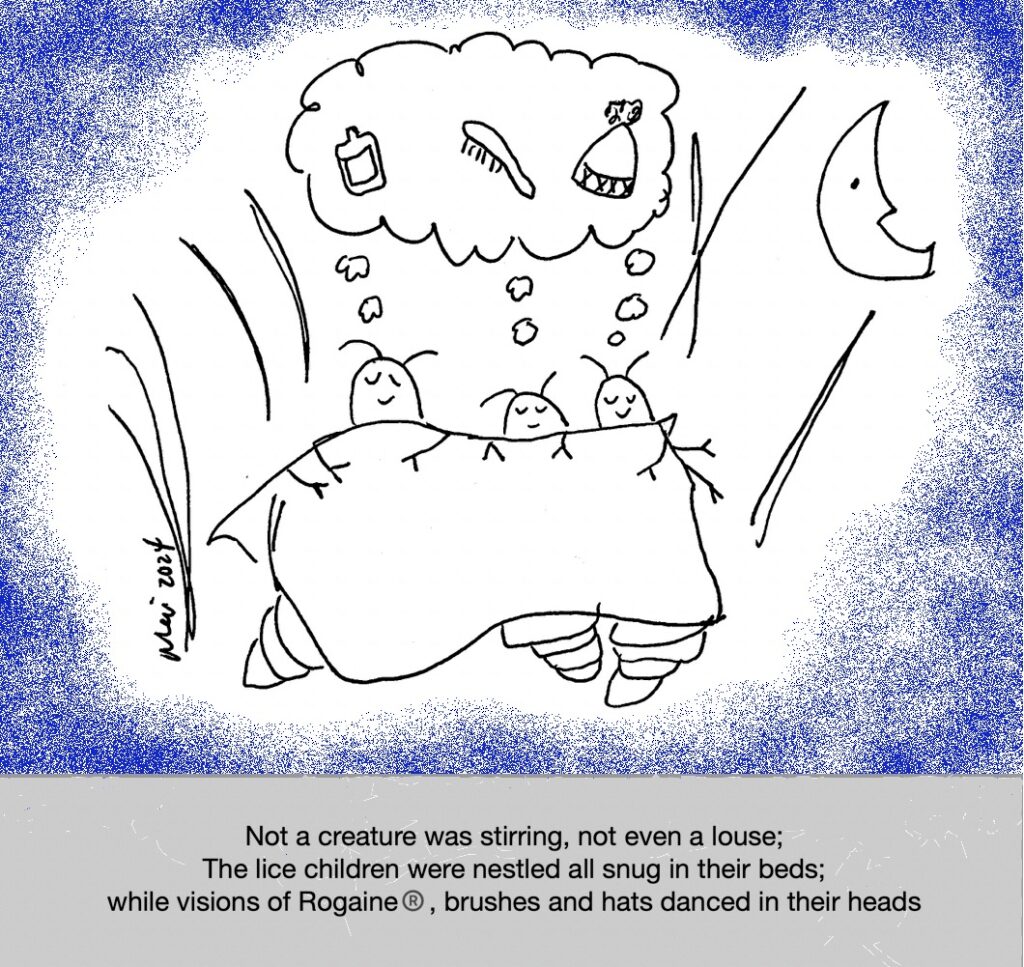
Now that school is back in full swing, you might notice your child scratching their head… and maybe you’re starting to scratch your head too. Let’s dive into the topic of lice and clear up some of the confusion.
What Are Lice, Really?
Lice are small, harmless insects that cause itching but don’t spread disease. The itching comes from a reaction to their saliva—similar to how poison ivy causes a reaction on the skin. It sounds gross, we know, but the good news is that lice are more of an annoyance than a health risk.
By the time you spot a live louse on your child, they’ve likely had lice for at least a month. So, while it might seem alarming to spot a louse crawling on their head, it’s not an emergency. Schools shouldn’t send kids home early for lice; after all, they’ve likely been in class with lice for weeks. That said, treating lice promptly can relieve the itching and stop them from spreading. Children can return to school the day after their first lice treatment.
How Do Lice Spread?
Lice can’t jump or fly; they only crawl. For lice to spread, kids’ heads need to be close together. Lice can also spread through shared hats or hair brushes, so remind your kids not to share these items, whether they’re playing dress-up or getting ready for a school dance.
Spotting Lice and Nits (Lice Eggs)
It’s easy to mistake other things—like sand or dandruff—for lice eggs. Here’s a tip: lice eggs (otherwise known as nits) are glued tightly to the hair shaft near the scalp and are difficult to remove with your fingers. Dandruff and sand slide easily along the hair shaft between your fingers.
Lice Treatment Options
- Topical Permethrin 1% (e.g. Nix): This over-the-counter treatment works well for many families. Follow the directions on the label, and repeat the treatment in 7-9 days. Nix has a comprehensive website that explains lice and how to treat them. Permethrin targets both lice and their eggs.
- Topical Ivermectin: Previously branded as Sklice, this treatment is now available over-the-counter. The generic version is as effective as the name brand. Follow the directions, and repeat after 7-9 days.
If neither of these treatments work, doctors can prescribe additional medications. Most cases of lice succumb to permethrin or ivermectin, so you likely won’t need a prescription. Safety tip: avoid using more than one product at a time. This prevents too much medication on your child’s head at the same time.
According to the American Academy of Dermatology, simply combing your child’s hair to remove lice and nits can be effective. Though time-consuming, thorough combing works when done properly. Here’s a helpful 3-minute video from a dermatologist on using medication and combing to treat lice.
All lice shampoos and lotions should be applied to dry hair, left on for the recommended time, and then rinsed off. Make sure to read and follow the directions carefully for whichever product you choose.
Treating Your Home
Once your child is treated, it’s important to treat their environment too. Wash any recently-used sheets, towels, blankets, and hats in hot water (at least 130°F), and dry them on high heat for 20 minutes. Seal non-washable items, like stuffed animals, in plastic bags for two weeks to let any lice and nits to die off.
Got More Questions?
This should cover most of what you need to know about lice, but if you’re still itching for more info, we contributed to this post in The Children’s Hospital of Philadelphia’s “Health Tip of the Week.”
Stay tuned for more tips on what might be “heading” your way!
Julie Kardos, MD and Naline Lai, MD
©2024 Two Peds in a Pod®



